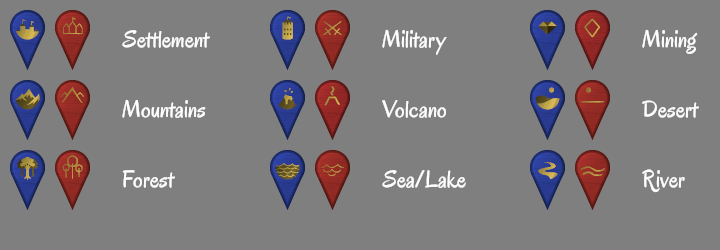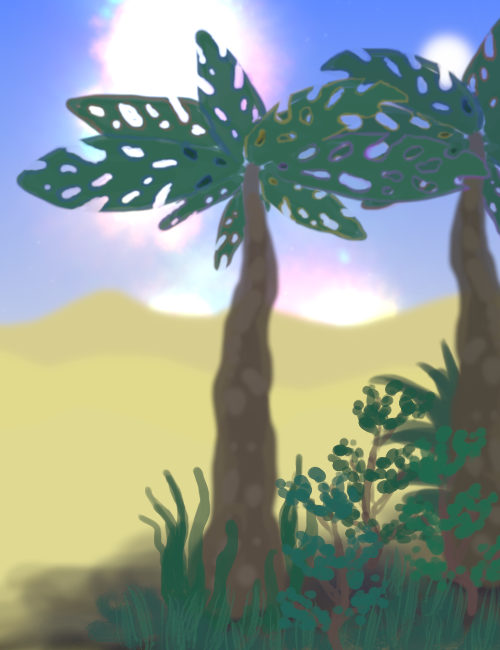Vélyphola Desert
A large desert near the equator on eastern Gysuphun.
Geography
Defining Features
The desert measures up to 2400 km from north to south and up to 1400 km from west to east. It is mostly covered by yellow sand dunes. Towards the west, beige rock formations begin to rise up on the way to the jungle. A wide, regularly flooded beach runs along the desert's eastern side.Rivers
The northeastern boundary is defined by the Golunyó River which emerges from a spring in the Vógónol Jungle. In the south, approximately a fourth of its area is cut off by the Nalényó River.Forests
Numerous forests are scattered throughout the desert. Their locations keep shifting between the years, making them rather useless as landmarks. They are known as mudanolé which translates as "wandering forests".Ecosystem Cycles
Plantlife in the mudanolé thrives in the colorful light of the Kaleidoscope. The forests are most lush in summer when Chryphóra's orbit around Saphéne brings the planet closest to this phenomenon. In winter, however, the majority of these plants dies off.





Comments
Author's Notes
Woohoo, my first article for Summer Camp! I plan to tackle the species prompt next and take a closer look at the wandering forests.